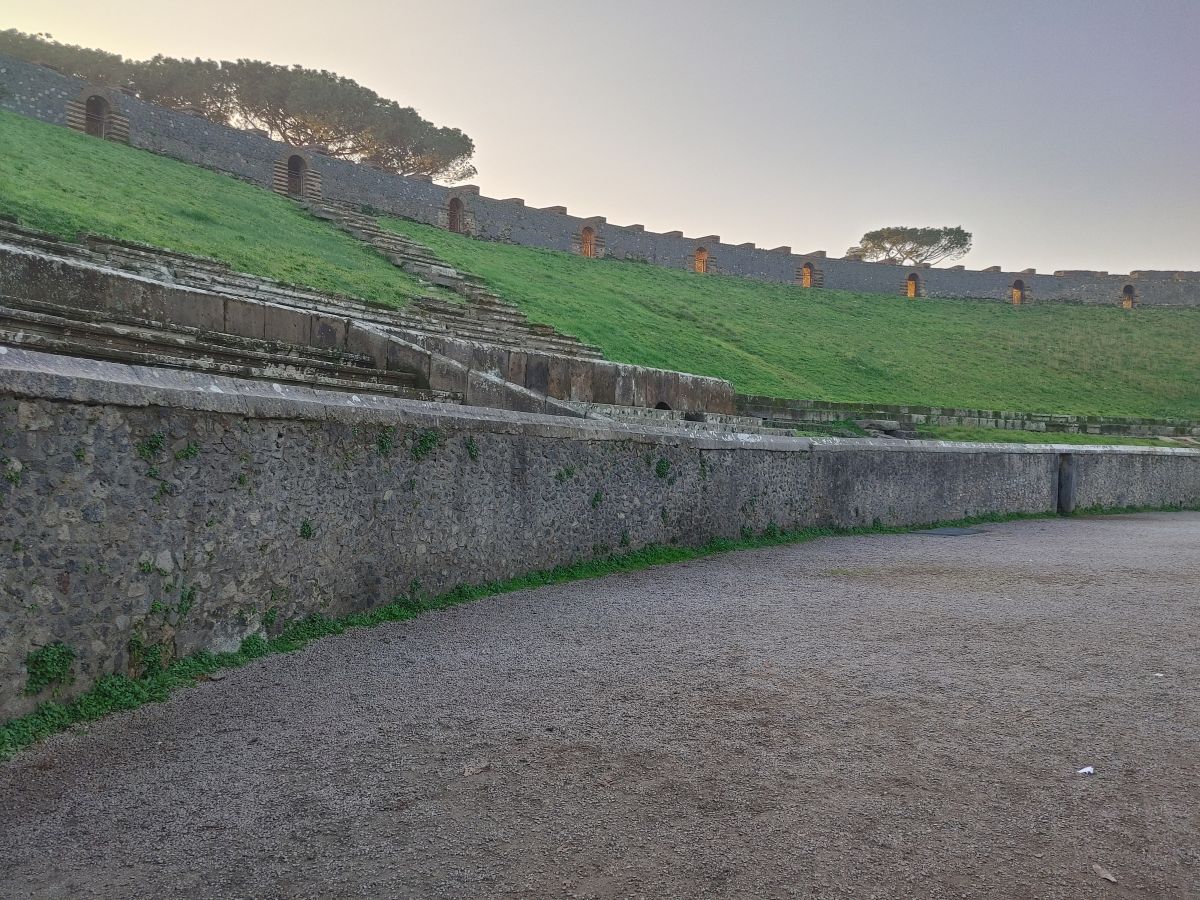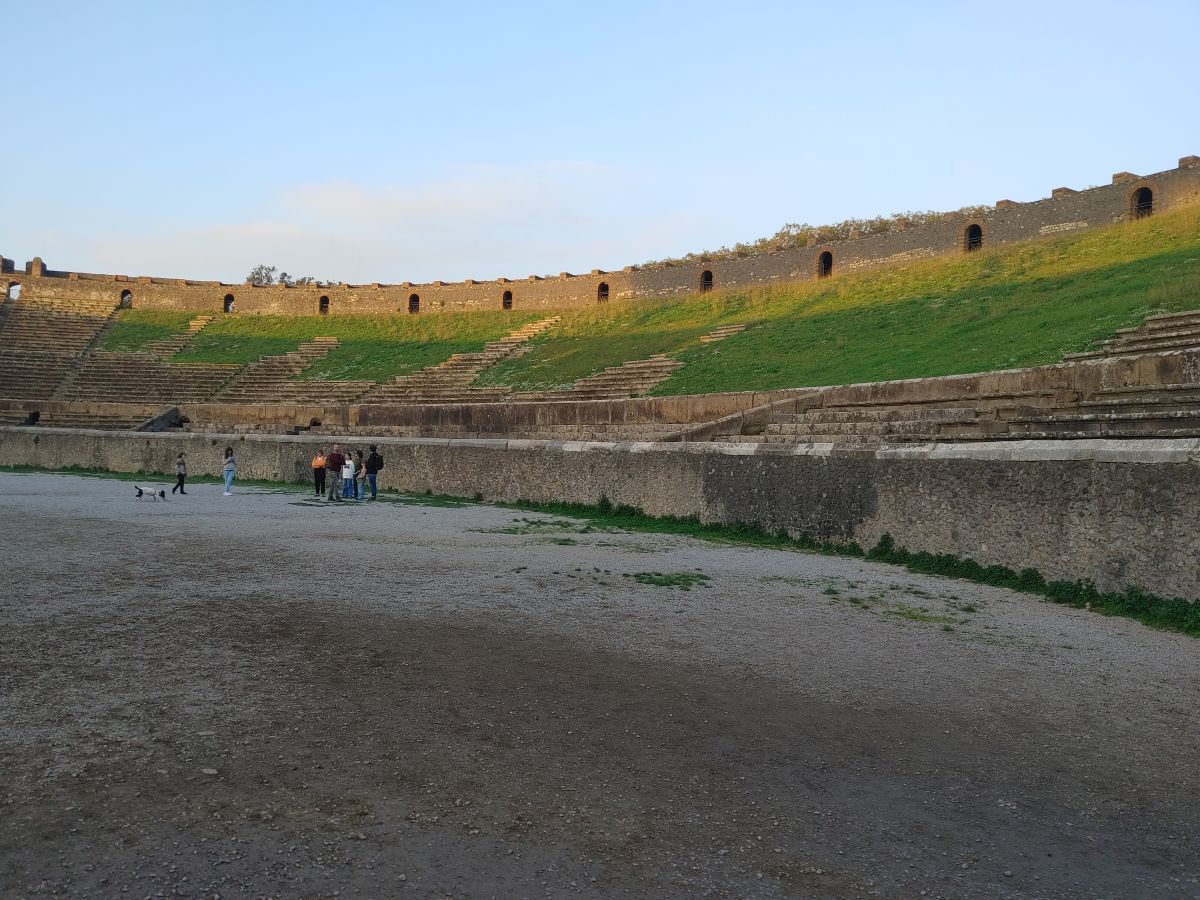Roman amphitheater in Pompeii was built in 70 BCE and is the oldest object of this type that has survived to our times. Characteristic, externally located stairs led to the upper stands. The amphitheater was originally wooden; later, however, a stone structure was built. The object measures 135 by 104 meters.
In front of the entrance to the arena, there was a special space, which could be the so-called spoliarium, i.e. a place where the corpses of fallen gladiators were kept, where they were deprived of weapons and armaments; or sanarium, a kind of hospital for wounded warriors.
Spectators were separated from the arena by a special “sill”, which was decorated with paintings. During hot days, a huge fabric roof (velarium) was stretched over the stands.
In 59 CE in Pompeii, at the local amphitheater, there were riots between the locals and gladiator fans who came from nearby Nuceria. Initially, attempts were made to “solve” the conflict with stones, later swords were drawn. The result was a real slaughter of newcomers – many with severed limbs and numerous wounds ended up in the capital. At the request of the emperor, the Roman Senate dealt with the matter, which decided to punish the city with a 10-year ban on organizing the games; all colleges and merchant organizations were dissolved and the guilty were exiled. The sponsors of the event and the instigators of the riot were sentenced to exile.
In 62 CE Pompeii was hit by a strong earthquake that damaged the amphitheater. In 79 CE the object was buried by pyroclastic material as a result of the eruption of Vesuvius.
- Roman amphitheater in Pompeii
- Tunnel leading to the arena of the Roman amphitheater in Pompeii
- Arena of the Roman amphitheater in Pompeii
- Arena of the Roman amphitheater in Pompeii











